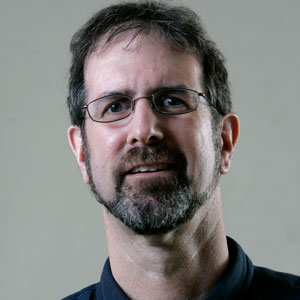Panel to discuss gender bias in sports journalism, coverage
February 3, 2015

Rachel Blount

Howard Sinker

Patty Klug
At the beginning of her career in sports journalism, Rachel Blount was often looked down upon and treated in a less-than-professional manner – not because she was a bad reporter, but because she was a female in a male-dominated industry.
Now, 30 years later, Blount is a sports reporter for the Star Tribune – the main reporter during the Olympics, in fact.
“Because it's no longer unusual to see women journalists covering sports, I'm guessing some people will be surprised to hear that I was often harassed by male coaches and barred from participating in interview sessions in locker rooms during the early years of my career,” Blount said.
The difficulties faced by Blount in proving herself were not specific to her. Many females in sports journalism have struggled (and still struggle) in gaining the respect of their male counterparts and the athletes.
A sports journalism panel taking place at 7 p.m. Thursday, Feb. 12, in room 204C, Gorecki Center at CSB, will examine this issue – both in the past and the present. The panel, entitled “Gender Bias in Coverage of Sports: Are Walls Being Broken Down?” will feature both male and female professionals in sports journalism. The event is free and open to the public.
The panel includes Blount; Howard Sinker, digital sports editor for the Star Tribune and a Minnesota Public Radio sport analyst/enthusiast; Jo Ann Buysse, a University of Minnesota professor and affiliated scholar at the Tucker Center Research for Girls and Women Sports; Dave DeLand, former St. Cloud Times sports editor and now a metro columnist for the Times; Dianne Murphy, a blogger for the Vikings; Leah Rado, athletic media relations director at CSB; and Shane Miller, associate professor and chair of gender studies at CSB/SJU.
The idea to organize this panel was born when Sinker visited first-year seminar instructor Patty Klug’s Introduction to Gender course in fall of 2014 to speak on sports and gender.
"There are so many gender issues in sports journalism, whether it's sideline reporting being the 'glass ceiling' for women, or the peripheral roles like those of FOX Sports North Girls, or the lack of women in sports media decision-making roles,” Sinker said. “Sports media is one of the last business or social arenas in which you can talk about everyone having an equal chance, and the reality doesn't match up."
Students in Klug’s course spent time researching the role of women in sports journalism, and discovered a large amount of evidence that women are often used as decoration rather than respected experts in sports journalism – in other words, sports journalism is heavily male-dominated in roles of authority.
This research, alongside Sinker’s presentation, elicited an unexpected amount of interest and discussion – enough so that Sinker and Klug decided to continue the discussion in the form of a panel.
“Our hope for the panel is to first increase awareness of the inequities between women and men’s sports, whether it be in our attitudes, attendance at sports games, underestimation of women sports journalists and overall challenges that are still present in this arena,” Klug said.
While the panel aims to elicit awareness of this gender divide, it will also raise and confront difficult questions.
“I won't be surprised if some people are made a bit uncomfortable,” Sinker said. “After all, many boys aren't used to hearing women talk about sports with the expertise and passion that our panelists are going to bring to Saint Ben's.”
As women gain acceptance in sports journalism, it can be difficult for younger journalists and recent graduates to recognize the struggles female journalists had to overcome to account for the current state of the industry. Rado, a former newspaper sports editor, recognizes the effort put forth in the past 30 years by female sports journalists.
“The amount of harassment women used to receive when trying to report on a men’s team was sad, and knowing some of the first female sports reporters paved the way for future sports journalists like myself so we don’t have to endure that every day is very humbling to think about,” Rado said.
Even so, the industry still has a long way to go to achieve gender equality. The most pressing matter now seems to be the lack of women in authoritative roles. A 2014 study by the Women’s Media Center reported that 90 percent of sports editors are white, and 90 percent are male.
“Where we still lag behind, I think, is in decision-making and opinion-setting positions,” Blount said. “There are very, very few women who are sports editors, TV/radio sports directors or columnists. So for the most part, men still set the agenda and drive the majority of the discussion.”
This event is co-sponsored by the department of exercise science and sports studies, the gender studies department, the Institute for Women’s Leadership and the CSB athletic department.
